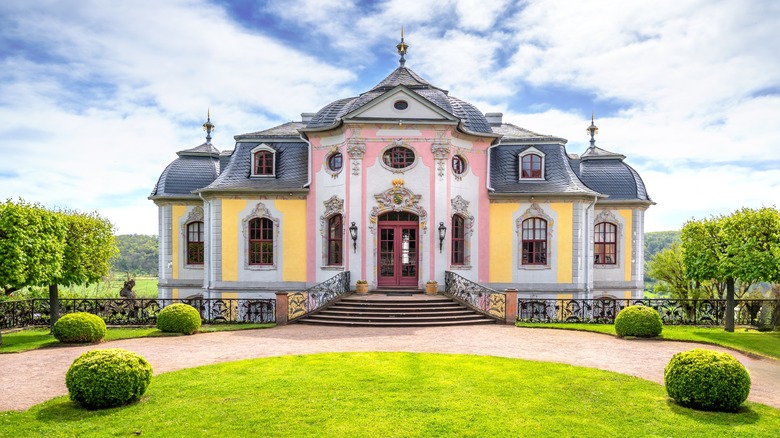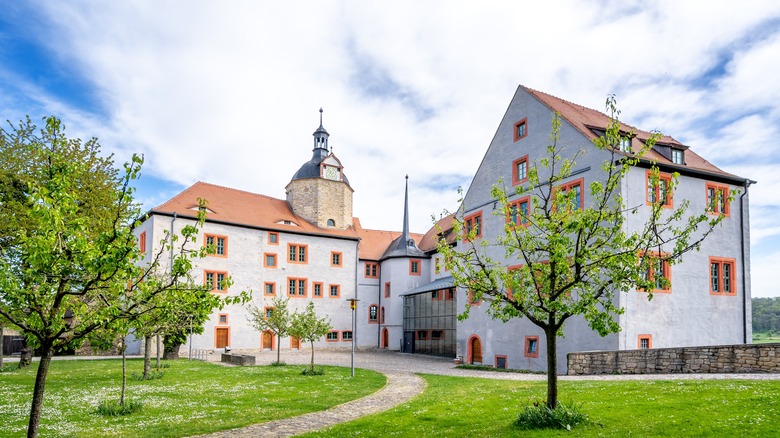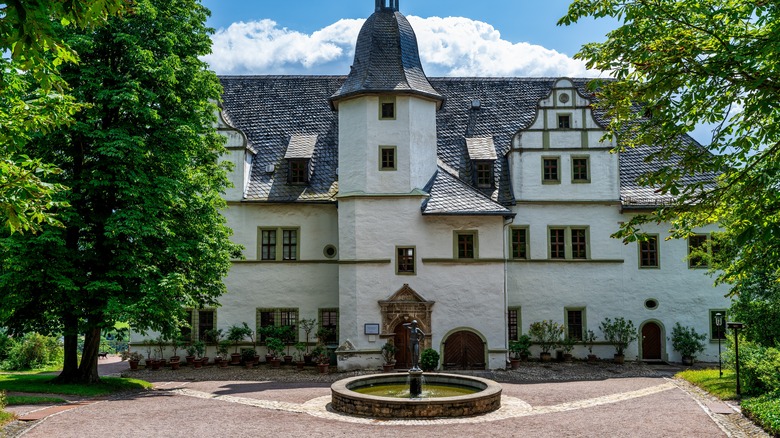Situated In Germany's Saale River Valley Are Three Popular Castles With Breathtaking Views
The Rococo Castle in Dornburg, Germany, is about as charming as castles get. Behold, the pink-and-yellow outer walls, the ornate trim around windows and doors, and the fish-scale roofing with pointed finials. Standing in the surrounding gardens, you may feel like you've wandered onto the set of a Wes Anderson movie. Known in German as the "Rokokoschloss," this mansion has a storied history. Duke Ernst August commissioned an Italian-style dwelling in the early 1700s. When the original version was deemed structurally unsound, the castle was torn down and replaced by the one that stands today. Famous guests included the Romantic writer Johann Wolfgang von Goethe. You could easily add Rococo Castle to a list of enchanting castles around the world.
Dornburg is a town of about 8,000 people in the state of Thuringia, in the center-east of Germany. The town — and castle — overlook the Saale River, which feeds into the better known Elbe River. Thuringia is often referred to as the "green heart of Germany," owing to its small towns and rich forests, and Dornburg is pretty far afield — the closest city is Leipzig, and Berlin is a three-hour drive (or train ride) away. But if you find yourself in this scenic nook, you'll find more than the Rokokoschloss: This palace is only one of Dornburg's three castles, which stand roughly in a row and represent a surprising range of architectural styles.
The oldest castle on the block
The oldest castle in Dornburg is literally called the "Old Castle," and it dates back to the 16th century, when Germany was a patchwork of feuding fiefdoms. Like the other two Dornburg domiciles, the term "castle" is a little misleading; they were all built after the invention of cannons, and the traditional medieval fortress — with crenellated walls and a defensive keep — was long extinct. Instead, Duke Johann Friedrich II of Saxony built more of a minimalist manor house, with numerous windows and a single stone tower.
Over the years, the Old Castle was repurposed as a school and factory, so it isn't quite as glamorous as the Rococo Castle. It's also closed to the public, so you can't get a glimpse inside. But you can still view the Old Castle from the grassy grounds, and it's conveniently located right next to the Rococo Castle; you can walk from one to the other in about two minutes. The landscape really comes alive in spring and summer, which most people would argue are the best times of year to visit Germany.
Dornburg's own little Renaissance
Perhaps the homiest of the three estates is the Renaissance Castle, a whitewashed beauty that could easily have been featured on "Lifestyles of the Rich and Famous." The castle was built in the early 1500s at the height of the European Renaissance, and the simple sloped roof and modest tower look most like a regular mansion. The "Renaissanceschloss" fell into the hands of several different owners over the next few centuries, but today it is part of the same beautiful network of gardens and walkways as its two siblings. All three structures are built on the edge of a high hill, which looks across the Saale River valley below. One can only imagine the life of a Thuringian duke — waking up each morning to manicured grounds and a commanding view of the countryside.
Dornburg is a little off the beaten path, and the town doesn't have much in the way of hotels. You're more likely to stay in the small city of Jena, about 30 minutes away by car. Although more than half of Germans speak English, you may find fewer fluent bilingual speakers in a town this rural. To help you grease the linguistic wheels, here are some essential words and phrases to know before your trip to Germany.


